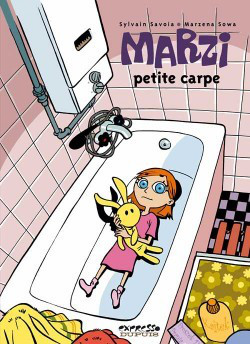
I expected to like The Shape of Water for different reasons than I did.
The central love story between a human woman and an amphibious man came off as more than a little creepy to me, and not because of why you might think it would.
Thankfully, the movie contains two other stories of border crossing that I found far more emotionally satisfying. One of these stories is about a Russian immigrant who came to America seeking intellectual freedom, and the other is about a black woman carving out a space for herself in the white-dominated society of the 1960s.
If you’re wondering why The Shape of Water hasn’t been given a wide theater release and has been playing in mostly arthouse cinemas, I’d have to say that it’s probably because of the opening ten minutes, in which the lead actress, Sally Hawkins, is shown disrobing and masturbating while naked in the bathtub. Just in case the first depiction of masturbation was too subtle for the audience to catch, the director helpfully provides a second masturbation scene accompanied by a sexy moan. I think the point of this is to establish that Hawkins’s character, a mute janitor named Elisa, is an adult woman with sexual needs, but it still felt unnecessary to me, especially since Elisa is so innocent as to be almost childish.
When it comes to interspecies romance, I am all for it as long as both parties are consenting adults. The problem with the romance between Elisa and her fish boyfriend is that I’m not sure that it can necessarily be called consensual. I’m also not entirely certain that the fishboy is an adult. The ways in which he’s visually characterized, with huge eyes and a lanky body, make him seem more like a teenage member of a boy band than an adult male of his species, and his narrative characterization of wide-eyed wonder and almost complete passivity makes him seem more like a child. Moreover, he is either a prisoner at the scientific laboratory or a prisoner in Elisa’s apartment, and he depends on Elisa’s goodwill not just for food and shelter but also, essentially, for the ability to continue breathing. Although she does not take advantage of him physically, and though he could easily kill her if he wished, the power imbalance (and strongly implied age imbalance) in their relationship is too pronounced for me to feel comfortable about his ability to give consent.
Moreover, Elisa makes very little attempt to communicate with him. He seems to be able to understand the basic sign language that she’s shared with him, but she does not teach him enough to have an actual conversation. According to what the viewer sees, she knows nothing about him, including his name. She never attempts to tell him about what has happened to him or where he is or what she intends to do, and she also never tries to ask him what he wants.
There’s a scene about halfway through the film in which the villain, a military officer charged with overseeing the lab’s security, sexually harasses Elisa in his office, physically intimidating her while invading her space and telling her that he finds her inability to use her voice erotic. The viewer is supposed to understand that his attraction to her difference is nothing more than a fetish that transforms her into an object that serves his pleasure while denying her subjectivity. In the same way, however, Elisa’s attraction to the fishboy is also fetishistic. She is drawn to him because… He resembles a healthy and attractive adolescent human male? Because she masturbates in the bathtub and associates water with physical pleasure? Because she’s just lonely and needs to see what she considers to be her own pathological difference reflected in a romantic partner in order to feel secure? To me, a woman who is old enough to worry about the creases in the skin of her neck when she looks in the mirror is old enough to at least try to talk to her partner, or at the very least ask him what his name is. Elisa is not a stupid lovestruck teenager, and it’s borderline offensive that she acts as though she’s only about as emotionally mature as one.
I found much more emotional resonance with the lead scientist of the team investigating the fishboy, who is a Russian named Dmitri posing as an American named Bob. Although this man is acting as a spy, it’s clear that he considers himself to be first and foremost a scientist. It’s unclear how much of his backstory is fabricated, but he seems to have held a tenure-track research position at an American university, which means that he would have gotten a PhD at an American institution as well. If this is the case, it’s likely that he trained at a Russian university and then, after realizing the severe educational limitations enforced according to Soviet ideology, he came to America like many other Russian scientists and intellectuals of his generation.
Due to Cold War politics, Dmitri has been forced to report to Soviet operatives, which he does unwillingly and in full knowledge of the precarity of his position. This reads like a dramatization of the way that many immigrants and refugees coming to America during the latter half of the twentieth century were torn between cultures and languages and identities. Also, because of his cultural liminality, Dmitri is forced to insist repeatedly and to multiple parties that he is a scientist, and that his knowledge and qualifications need to be taken seriously. When push comes to shove, however, Dmitri is neither Russian nor American but rather a human who not only sees the fishboy as a fellow sentient creature but is also able to perceive and unconditionally trust the intelligence and competence of the two female janitors whom he observes making plans to rescue his charge.
The woman who helps Elisa break her fish boyfriend out of the lab is Zelda, who’s played by literal goddess Octavia Spencer. Despite being set in Baltimore, a city with an African American majority population, The Shape of Water is very much a movie about white people, and it’s somewhat aggravating that Spencer was cast in the role of the sassy black friend. Still, the film does not shy away from how her character navigates the space of the research lab, which is filled with white people. As a black woman, she is more or less invisible, a status that’s emphasized by the way that she and the other black workers have figured out how to take advantage of the blind spots in the lab’s system of security cameras. Because the white scientists and military officials have been socialized to ignore “the help,” Zelda is able to see and hear everything and go anywhere without attracting attention, and ability she is able to use wisely at her discretion.
There’s a scene late in the film when the white military officer hunting the fishboy storms into Zelda’s apartment and attempts to intimidate her. In the process, he performs an act of terrible violence, but she stands up to him like an absolute boss and then immediately runs to the phone to warn Elisa without even bothering to check if the man who just threatened to kill her has left. She then calls the police, which I find extremely interesting. Like the city itself, the police force of Baltimore is comprised of a black majority, and the way that a black woman was able to call on the black local police to resist the white federal government reflects the history of the city as a major site of resistance against white supremacy during the Civil Rights Movement. For a movie that could very easily have taken the Stranger Things route to a comfortable and uncontroversial type of cultural nostalgia, this is subtle but sharp reflection of what was actually going on in the United States during the 1960s.
Ultimately, the love story between the human woman and her amphibious boyfriend feels like a fairy tale version of the various cultural changes and border crossings that are represented elsewhere in the film. The fairy tale version of this story has a relatively happy ending, but the reality of the people who have to remain above water in the real world is far more bitter than sweet. This is why, when I watched The Shape of Water, I found myself sympathizing far more with the supporting characters. Still, the movie is just as weird and gorgeous as you’d expect, and let’s be real… that fishboy is kind of cute.
( Header image from the film review on Collider )
Share this:




